Table of Contents
[ad_1]

“Today each organization must know how to build its digital capability. Because now every company is a software company, every organization is a digital organization.”
— Satya Nadella, CEO, Microsoft
class=”twitter-tweet”>
Recently, an article published by the Harvard Business Review gave holistic advice on how in terms of a technology renaissance, we ought to not forget our humanistic side. A very unconventional beginning to a write-up which will solely speak about the whole nine yards of tech, but since digital transformation services are about bringing change to the existing reality, it’ll cease to exist sans a touch of humanism.
The latter half of the 20th century was the genesis of the ‘Age of Information’ where progression was made from orthodox industrial techniques to the forever evolving Information and Technology. From analogue, everything turned digital. And that’s how digital transformation annexed its purview.
Let’s understand it layer by layer.
What does Digital Transformation mean?
In simple terms, Digital transformation is the impact and influence of technology into each and every business vertical. And when we say technology, we mean digital. But it doesn’t restrict itself to that. It’s equally a colossal cultural change that thrives on experimentation, brainstorming, challenging metacognitive skills and coping with failure. It is the answer to the question ‘what is the digital age’.
Salesforce encapsulates it as ‘This reimagining of business in the digital age is digital transformation’.
The fate of digital transformation affects all, i.e., from the CEO to an intern, everyone has a give or take in it.
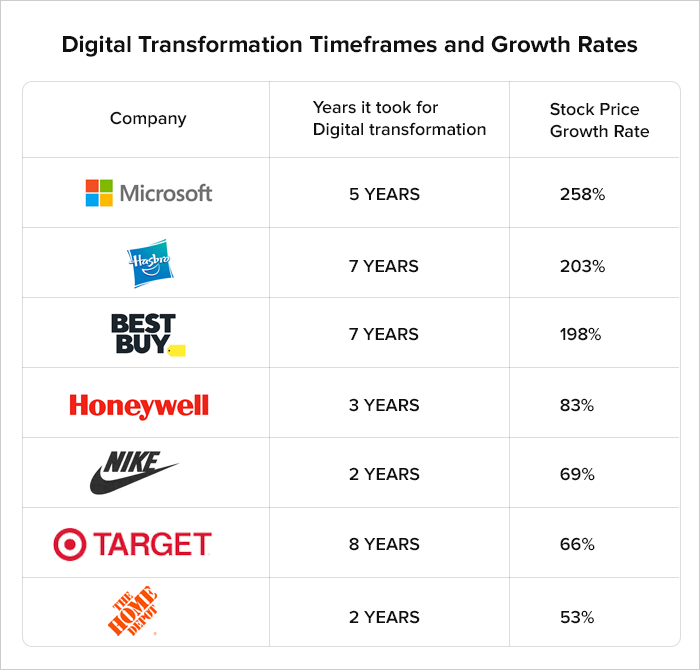
The term probably meets more than the eye. It actually covers so much that it’ll be unfair to associate the word ‘definition’ to it. It’s referred to differently by different people. Some call it digital business transformation since it has revolutionized the business world completely. To really understand what it does, you’ll have to leave aside the dictionary approach and actually try to inculcate its impact; basically what kind of evolution it has led to and what changes have come about. For example the impact of digital transformation solutions on society, gov~ernment, economy, law and order, etc. And vice-versa. It is interesting to note that when society changes or undergoes a diaspora, the impact of businesses is tectonic. Every organization, whether small or big, falls under the purview, which implies they stand on their own.
What broadens it further is that to each person it evokes a certain thing. For you, digital transformation may mean reducing the use of paper, for some, it may mean replacing manual labour with AI-powered machinery. Another might consider how the mobile app development process has come of age yet someone else might feel it’s about connecting with more than a hundred people via a single platform.
Why does digital transformation matter?
Digital Transformation is on the mind of every small and big business person. They want their organization to be a part of it. A not too old survey revealed that 85% of enterprise decision-makers accept that if they do not digitally transform their business within 1 year, they’ll hit rock bottom. But the concept is not clear to all. Some people believe that it’s a massive deal or some things it’s about fixing the old.
Frankly speaking, every high-level talk in this context fails to answer why you even care. What’s the point of fixing, if there are no breakdowns? How does the boat rock, if workflows and continued processes keep things steady? There are the questions that you will ask and of course, there’s significant logic to it. But then, in order to bring change, there are huge costs associated at the same time as it’s not just the changing of nooks and crannies but bringing in a new-age system. As an entrepreneur or a decision-maker is the investment in time, money, sweat and labour for all that worth it?
YES.
It does matter, maybe not at impulsive moments but in the longer run.
Four reasons to explain why it matters:
- Efficiency is increased
- Customer experience is improved
- Helps to stay ahead in the competitive market
- Better chances of earning profits
While reading about digital transformation, you’ll come across two other similar terms viz. Digitisation and Digitalization. So before delving deeper, let’s understand how the three are different from each other.
What is the difference between digital transformation, digitisation and digitalisation
The three terms have close semblances, can be interchanged in certain contexts but have specific differences among them which you should know so that the concepts are clear. Here we have separated the trinity from each other so that you can understand each individually.
Digitisation- the paradigm shift from analogue to digital
You probably may have heard/seen how official data and records were maintained on paper. There were huge bundles of files, papers, blinders, faxes, etc. Whether printed or handwritten, the information can be classified as analogue. Slowly with the rise of software from the 70s, the world moved towards a digital path. Computers and PDAs started taking over and soon those hard copies became digital soft copies. This conversion of analogue data into digital data is called digitisation.
As digitisation took over, the process of data research and sharing became faster with fewer hassles but you know old habits die hard. Businesses who were acclimated to the analogue medium and treated the successor digital with no difference. The change occurred slowly and gradually and digitalisation kept on happening. Interestingly, the operating systems at that time were designed in a manner that it brought back the feel of an analogue-driven process.
Digitalisation- use of digital data to simplify complex processes
Digitalisation can be called the succeeding step of digitisation; the digitised data is used in making work simpler and more efficient. A noteworthy observation of the word is that it’s a systemic process rather than a systematic process. Meaning — this process doesn’t change the way you do business, it’s intended to internally speed up your procedural work. For example, a few clicks or a simple search will fetch you the entire information of a particular thing instead of the primitive way of searching through a manual pile of files.
With the advancement of digital technology, people simultaneously started embarking on more avant-garde business tactics. Speeding up the process is just one aspect of it but an important one. Consider fields like retail, BPOs or field operations; with the introduction of computers, everything became quick and saved hours of effort and time. The foundation remained what it was — what changed the implementation — like fielding an enquiry, finding relevant information or providing solutions. This is how the idea of digital transformation came forth. The new way of doing things.
Digital transformation- giving value to every user interaction
Let’s understand with an example. Reed Hastings and Marc Randolf came up with Netflix in 1997 with an apocryphal story that the former was fined for failing to return a copy of Apollo 13 at the movie rental store. It started out on the lines of mail-order service taking on the then $16 billion home video sales and rental industry. With years of innovations in online streaming, Netflix built its empire. Today Netflix competes directly with traditional broadcasters and cable TV networks along with production houses by offering audiences a universe of on-demand content at supreme-competitive prices. In fact, the OTT platform also partners with its competitors to buy its streaming rights as well.
This is one small yet prominent example of the prowess of digital transformation. It changes the way businesses were being done or creates never-seen-before processes in doing commerce. This has helped companies looking at their structure, work ethics, vision, mission, achievements, etc. in hindsight. Like Netflix which takes advantage of the technology to enhance the user experience design. It also keeps itself transparent in sharing the development of first-run shows and movies at in-house studios. A deep study on the media services giant and how will mentally visualise them asking things like, “Can we alter our business style entirely in a manner that facilitates improved decision-making, game-changing efficiencies and continuous CX with endless possibilities for personalization?”
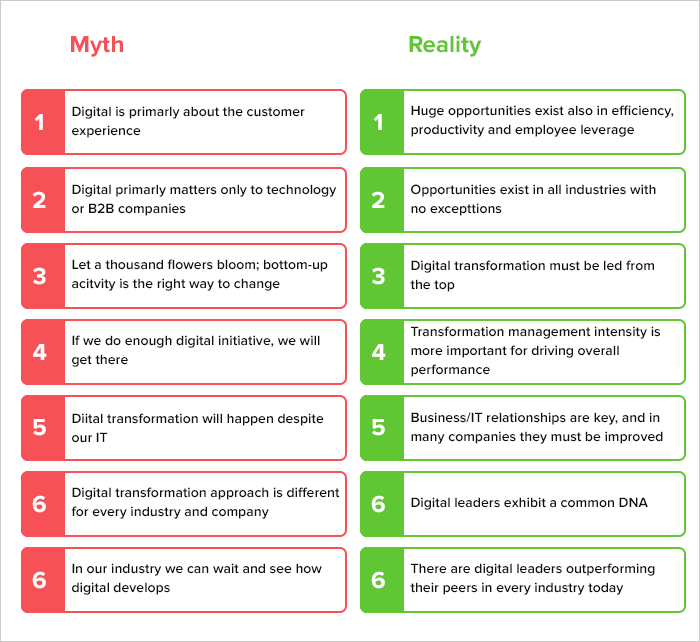
Mythbusting 101: Realities of Digital Transformation
Digital transformation is no more a second fiddle; almost every organization whether small or big is adopting it. But everything comes at a price, words and rumours can make and mar anything. That’s why you should be aware of the misconceptions that are associated with it.
Following are some old nan tales and decoding of actual facts.
Digital transformation is intangible therefore has no tangible value
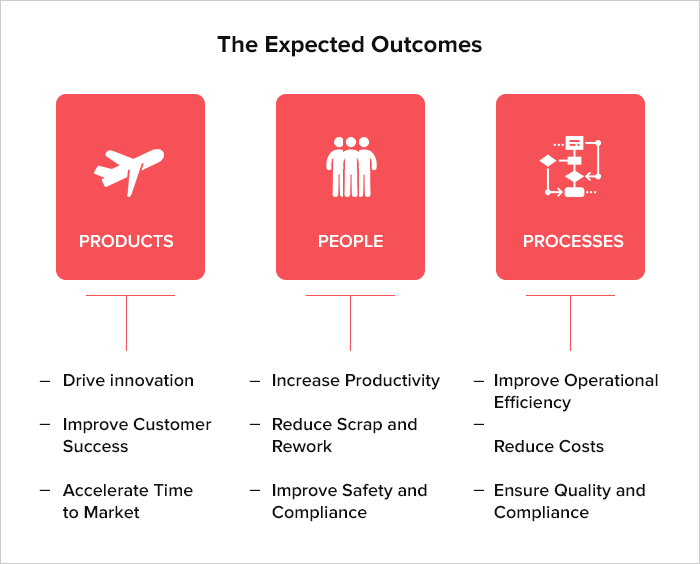
If this would have been, we wouldn’t be whiling away our time on discussing it. Digital transformation is 100% real and companies who are not with it are behind everyone else. Following is a list of stats that highlight its impact on industries:
- 3-8% scaling down on service labour cost
- 20% reduction in maintenance expenditure
- 40% slash in maintenance cost
- 50% reduction in unforeseen downtime
- 90% upgrade in right time first quality
- 97% lower ramp-up defects
*The following stats were compiled from the users of CIMData, Aberdeen Group, IDC and PTC.
Digital Transformation centres around Proof-of-Concept only
By saying this, people want to prove that it’s a time-based concept whereas there’s abundant testimony to the fact that companies have learned to gain real results with the concept. Digital business transformation is a strategic approach where ROI objectives are laid out and conjoined with the value propositions that the business has to offer.
An example can be the American snowmobiles and ATV manufacturing giant, Polaris. The company used the PLM or Product Lifecycle Management software to bring about digital transformation. Now with PLM getting the high-ground, Polaris yearns to expand the scope of data via IIoT and AR. z
Digital Transformation is all about technology
This is like calling Harry Houdini as a man who was good with smoke and screen. Of course, technology is the most integral aspect of it but that’s just only the key to Pandora’s box. A recent survey stated that one in every five businesses failed in their digital transformation projects among the polling firms. Many businesses, especially the fledgeling ones, consider technology to be the highest contributing factor to bring change and success. That’s a BIG misconception. It can only be transformative unless the technology is corroborated by cultural, process-based and customer-centric stratagem.
Key Trends of Digital Transformation in 2020
Till the 2019 calendar year, digital transformation has helped in making rapid industrial changes into a success but one has to know that there exists ‘digital transformation fatigue’. Many suspected that this year, 2020, will be the year of retribution; the year where past mistakes will be specifically looked upon to improve. And since it’s the start of a new decade, what can be a better time. Surprisingly, things took a very different turn as, since the beginning of the calendar year, the coronavirus pandemic has rocked the entire world and steamrolled business people to rethink their business structure. They had to come up with alternative means of bringing change.
Like a slow burn, things have started trotting on their normal course as businesses are slowly waking up from the lockdown slumber. But despite all odds, the transformation couldn’t be stopped — it continued. And since a good half of 2020 still remains, the following are noted trends that have beamed indispensable by experts.
- Brisk adoption of digital operating models which includes integrated cross-functional teams.
- Reorganization of business models as those who placed their bets on big data governance has started to emulate their peers already.
- Introduction and implementation of Artificial Intelligence and Machine Learning.
- Unremitting mergers and acquisitions activities in the IT outsourcing industry.
- Consultancies exploring and embarking on newer digital collaborations and partnerships.
- Promotion and expansion of public cloud adoption.
- Finding and establishing more advanced success metrics of digital transformation.
- Paying more heed to the long-term value of digital initiatives.
Digital Transformation in customer experience
Marketing is a key aspect of digital transformation. In fact, the term many use here is digital marketing transformation. Along with marketing, customer experience is equally vital.
The concerns of customers are pain points on which companies try to identify. The points convert into growth/transformation factors which they take into consideration as objectives. The end-to-end customer experience improvement approach is impacted by changing customer expectations. Speaking on the context of digital transformation, organizations try to focus on an aspect called digital customer experiences which is a part of the former yet in more specific terms.
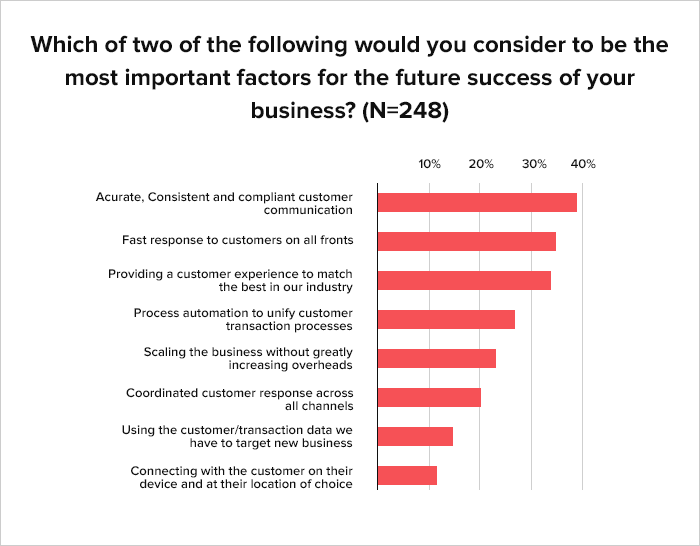
How Customer experiences serve as a key indicator of driving factor for success in business
The examples which highlight the importance of customer experience across several industries are in plenty. That’s why we have brought to you a few which are distinct from each other.
Let’s go through some of the imperative reasons as to why Customer XP plays a significant role and how businesses go about comprehending the customer journey and its contextual essentialities.
A holistic and enterprise-wide approach
Digital transformation at the level of customer experience works two ways — front end and back end. In general, only the front-end part is taken into consideration but it’s a holistic approach. Not just customer-facing functions but the organisation in its entirety is counted and back-end cannot be left out. Another more connecting aspect is the enterprise-wide approach.
People before everything
What does customer experience management comprise of? People. For a comprehensive customer experience optimization approach, people are the most important aspect both as customers and for internal reasons. Your objective is to ensure that customer-facing processes, interaction and experiences are digital transformation tools that give some value to customers so that they want to use them instead of opting for costlier alternatives. This is also essential in churning a high user-retention rate.
Answering the why within the why
Customer experience management and optimizing its leads to precise and transparent results for the business, though it varies from organization to organization. The ‘why’ of customizing customer experiences like citizen experience in govt or patient healthcare in healthcare is mandatory. The ‘why’ is as important as the ‘how’ and ‘what’. The rational reason corroborating this is that customer satisfaction churns good business. How can you observe this– individual pain points are answers to the ‘why’. It consists of growing customer churn (why?), more dissatisfied customers (why?) or anything that brings out the why beyond the why. This is often in relation to market disruptions which include transient customer expectations, growing competition, lacking innovation, et al.). In short, upgrading processes and digitizing to improve Cx is the front cover of a book and the back cover is transformation and its reasons.
Personalized customer experiences
Carrying on from the above points, the buyers of today want businesses to serve them as an individual, a unique individual and get to know the perspectives, preferences and purchase history. As per Accenture, 75% of the customers are more like to purchase anything from a company only if it
- Recognizes him/her/them by name
- Is aware of his/her/their purchase history
- Recommends products based on previous purchases
What’s the best part about that? Customers have no inhibitions if companies access their user data. Below’s an image that statistically elaborates this.
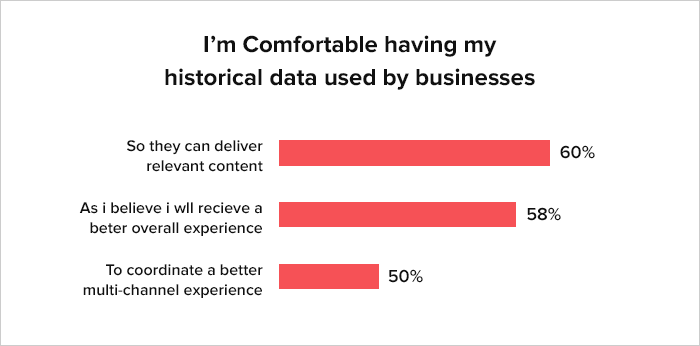
The important elements that matter the most in this context are the data collection, data-driven marketing, social CRM, the contact centre and the digital customer journey. Digital marketing transformation is heavily dependent on the transient nature of consumer behaviour and expectations the most.
The above Sales Funnel is an example of the consumer-focused marketing process where the customer acted as the centrifugal force. It’s now dead. The path is no more one-dimensional or streamlined in an orthodox fashion. The digital customer reality is more about mind-game and modern marketing techniques need to integrate with other divisions like information technology and customer services.
Role of Digital Transformation in measuring ROI
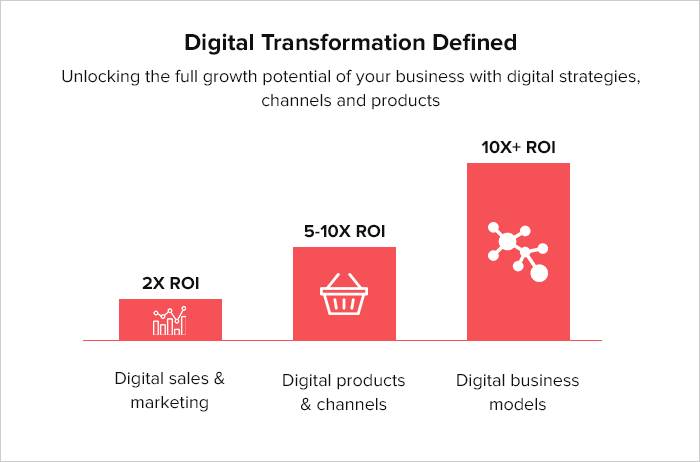
If leaders yearn to convert digital transformation into a success, they must ensure a healthy ROI. But saying that is one thing, actually making it happen is another. With multiple projects that are meant to break the barriers of conventional business, alter how a company stable feet in the markets, and essentially, reshape interactions with customers and employees. Suppose, a project like refurbishing an existing mobile app may reap short-term profits with applications transformations but other bigger projects are targeted towards higher return on investments.
To elaborate on the same, here are some indelible points
“Introspect before taking enough risks”
Cecilia Edwards, who is partners the Everest Group, a digital transformation consultancy and research firm, believes that a ‘portfolio view’ instead of a ‘project view’ is the best determiner to understand how well digital transformation investments are performing. A digital marketing company takes a holistic view of digital change efforts in the same vein that a mutual fund manager or venture capital form looks at the overall performance to ascertain how things are going on.
This is necessary as one project performance falling short doesn’t affect negatively on the broad-gauged efforts of the IT. Tolerance for the unavoidable risks is also moulded that must be undertaken to clinch digital transformation in the actual sense.
Setting initial metrics in advance
The objectives are to observe, learn and calibrate for that you need to hone micro-metrics agile experiments. Another aspect is embedding business outcomes. You should look at the strategic impacts like revenue growth, time to market, lifetime customer value (LCV). Other aspects are cost impact and operational impact. The latter includes productivity improvements, scale and operational efficiencies.
How Digital Transformation impacts various industries
This section will help you understand what digital transformation means for business when you get to learn about its impact on each industry. Digital transformation companies from different industries are impacted differently. It is interesting to see how the revolutionary changes took place from industry to industry. Let’s get an overview of the same.
Retail
The retail industry is one of the fastest-growing verticals in the world and constantly witnesses technological advancements and upgrades to satisfy the changing needs of a 24/7 customer base. Here are a few key digital transformation trends in retail that have impacted the industry.
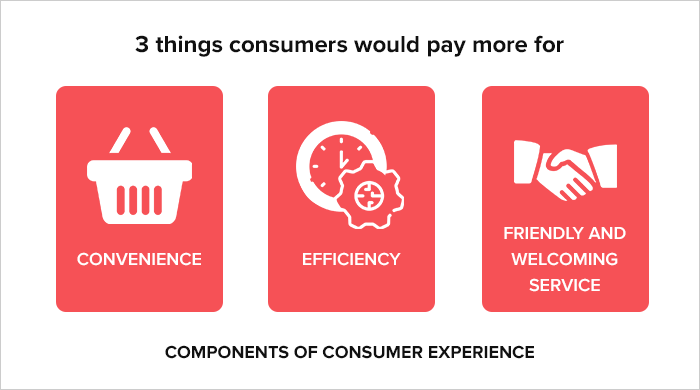
Omnichannel enhancements
Omnichannel is a key moderator in helping the growth of retail. Retailers have moved ahead from separating mobile and web channels for business. Now they function as one, hence the name. This facilitates unified commerce. The earlier problem of having disparate systems created too many bifurcations which made it difficult to manage. Data reconciliation under one interface makes it faster and reduces the margin of error. Retailers are gaming up their omnichannel levels with increased efficiency. For example, if the retail website product count is down, consumers will move on to the next retailer who’s omnichannel experience is sorted.
AI-assistance
Artificial Intelligence has grown so powerful that a consumer might not even be aware that a particular function is happening because of AI. Chatbots are a fine example. When you interact with the website/app through the chatbox, the responses, at times, are so real that it becomes difficult to identify whether a real executive in flesh and bones is talking or is it a robot-assistant. With AI, more disruptive technologies like AR, VR and IoT get leverage and help in expanding the customer base and retaining it.
Cashless checkouts
One of the most progressive feats by retailers has been cashless checkouts. If you are aware of Amazon Go, you know offline shopping cannot get easier than that. You simply go and pick the products and the rest your app will do. Customers don’t even need to carry wallets or purses which have their debit/credit cards.
Manufacturing
The manufacturing industry has made a headstrong shift from an enterprise-wide and ecosystem-wide digital transformation perspective. You might be familiar with the term Industry 4.0 a.k.a Smart Manufacturing. It encompasses the right mix of traditional manufacturing, industrial platforms and practices with current technologies such as the Internet of Things (IoT), machine learning, big data analytics and cloud computing.
The fourth industrial revolution is the digitalization of the manufacturing sector. It is known by many terms such as the Industrial Internet of Things (IIoT), digital factory, smart factory, etc. Moving on from the sobriquets, its primary purpose is to generate an end-to-end digital ecosystem by digitalizing an exorbitant amount of physical assets for the entire value chain.
The observing changing factors include:
- Enhanced production cycles
- Increase in demand for customization
- Reinforcement of products
- Information access to employees
Govt and Public sector
Digital transformation is being implemented by governments all over the globe for national, regional and local levels. The goal is to achieve development. If you look around, it won’t take much time to find evident examples of the same. Say Australia for example. In recent times, prudent actions and initiatives have been taken while promoting digitalisation wherein 2015, the Digital Transformation Office was launched. It started from a very straightforward goal which was to create a unique digital identity so that natives can access government services with a simple login process.
The next example is that of the United Kingdoms. Similar to Australia, the UK government had made announcements regarding a new advisory board to helm a digital transformation program and digital services of the government. This was in early 2016. They are regarded as the ‘Digital Heavyweights’. Citizens in the UK have hailed the movement and considered it a ‘much-needed’ move.
The USA government runs the ‘United States Digital Service’ which is expected to remodel the way the feds deals with the people. Now, that’s a mammoth task given the measured IT transformation rate in the country but the aim is to enhance the accessibility of government information, healthcare and upgrading immigration procedures. By the end of 2015, The US Census Bureau conferred Accenture with a 5-year digital transformation business contract while letting several programs (apart from the website) to operate on more local and defined levels.
Healthcare
Digital transformation in the healthcare business is highly dynamic and not in everyone’s capability to surf with the tides. It’s a harsh truth but the more you know.
The burdensome thing is calling the shots on investing in a particular emerging technology along with getting a team who are experts on the same. It involves a lot of risks, that’s what a flexible digital epoch also comes with. To single it out, your outdated business processes need to be gone and you have to pin your hopes on this new disruptive technology to cave in huge ROIs. To get a better hang of it, the following bullet points are some noteworthy observations for digital transformation assessment on healthcare:
Supply chain
If you’re into running a business, you know how important supply chain and logistics are. It’s practically in almost every business type. The following are its key components:
- Data Digitization — minimal to no dependency on paper and complete focus on electronic data analysis.
- Process Automation — minimizing the time taken for monotonous or time-consuming tasks so that human effort can be saved and utilized in a more efficient manner.
- Analytics application — Derivation of insights via data and coming to conclusions with data-driven decisions which results in more oriented choices.
- Digital interactions enabled — Enhancing collaboration efforts so that employees can coordinate in a seamless manner
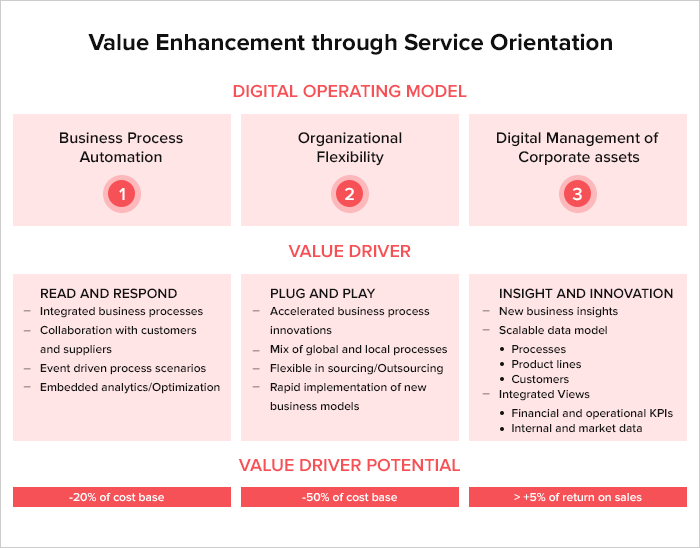
When you’re trying to inculcate digital transformation, you must remember that each organisation has its own set of goals and its objectives are influenced timely via scope, governance and strategic intent irrespective of the nature of the change which may be unidimensional, multi-functional or enterprise-wide. The accountability lies with governance the nature of which may be centralised or decentralised. Strategic intent for the digital transformation focuses on setting up the reasons for which the organisation is experiencing a change. The plausible reasons are to achieve operational brilliance, to narrow the gaps in customer intimacy and to expedite the growth of an organisation.
Examples of Digital Transformation
As mentioned earlier the best way to understand Digital Transformation is by citing examples. They are successful digital transformation strategy examples not just because of the business approach but also due to customer engagement, thus the holistic approach.
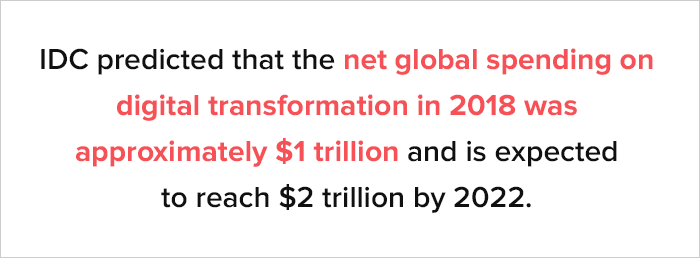
Whirlpool
The Whirlpool CDO elaborating on the company’s digital transformation ventures
Whirlpool as a company has always focused on adhering to smart connectivity, which they believe is the wave of the future. Even it’s customer base agrees to that. To empower such notions, the company introduced and devised a Product Lifestyle Management (PLM) solution. This PLM solution has helped Whirlpool to decrease the cumulative product and system complications while driving lifecycle processes and efficiencies.
There’s more to it as they integrated with other modern technologies (such as Digital Twin) to justify product concepts and their features in a jiffy. Lo-fi prototypes are tested with swift, cross-functional learning loops which have managed to decrease the time taken to market a new product and heighten the innovation velocity.
The Whirlpool Innovation Spotlight page will give you enough insights into their processing and their approach towards improving customer experience via digital transformations.
Trivia: To give room for innovation, promote efficiency and working of quality improvement of an enterprise needs the abandonment of primitive or siloed approaches.
Volvo
The vice-prez of Volvo Belgium and Luxembourg sharing in-depth insights on the company’s approach towards digital transformation
HQ orHigh-Quality is a lynchpin of every product or service rolled out by Volvo. It carves a different niche in the market. As the leader of manufacturing heavy-duty automobiles and machinery that includes trucks, buses, construction equipment, industrial machinery, etc. the company has launched a successful digital transformation strategy to speed up efficiency, flexibility and agility in their daily processes.
Volvo is currently working on creating a ‘digital thread’ for multiple business areas which include design, manufacturing, Quality assurance and control. With a single source of truth – for operations both upstream and downstream, the company is prompt in altering customer requisites and configured products.
Trivia: As we just mentioned Volvo’s digital thread as the current foundation for digital transformation, there are numerous case studies to deduce its value in the chain of events. In one of their case studies, Volvo is disseminating data from its digital thread via AR to enhance the QA process.
Lavifood
The Vietnamese food giant Lavifood is known to retail fruits, veggies and agro products to the global market. It’s currently using a pantheon of technologies to bring in digital transformation. These technologies include IIoT integration, connectivity at the industrial-grade and real-time analytics even at the shop-floor level. This gives better transparency to their plants and they are able to deliver more dynamic responses to business affairs eradicating downtime and effects on perishable products. This ultimately leads to improvements in product quality.
Trivia: The lesson that Lavifood teaches us is to collate your digital transformation strategy with your major business goals. The company keeps continuous delivery of the freshest products to consumers worldwide as its topmost priority. Having this as their vision, Lavifood is leveraging technology strategically to allow them to carry out operational efficiencies and surge productivity in techniques that shall refine customer experience with time.
Howden
Howden’s application of technologies to implement digital transformation
Howden is popular for its heavy-duty industrial air and gas handling equipment used to have unplanned downtimes. And since they are always on demand, they decided to banish the negative trait as quickly as they could. The company made this a mandatory focus among their digital transformation initiatives. They started the program “Data-Driven Advantage” that pivots around implementing state-of-the-art technology like IoT, AI, AR, VR, MR and Digital Twin to positively impact the needs of customers and procreate newer business ventures.
Trivia: With technologies like IoT, AR/MR and Microsoft HoloLens, Howden worked on their pitfalls that were affecting its customer care processes and found a way to rectify it.
The Future of Digital Transformation
Now you know why digital transformation is important. According to Information Age, digital transformation will dominate business strategy in 2018, and CEOs will look to their CIOs to act as strategic partners to guide them through a series of significant changes.
Techspenditures (tech+expenditures) is ascending the climb with $3 trillion at the global scale of which the US alone has spent $1.5 trillion (as estimated). The technologies which are emerging at a rapid rate are helping businesses reinforce profitability and scalability values. What organizations need to ensure is the range of elements that need to be ensconced in the right place.
Greater technology implementation leads to innovation and that leads to increased efficiency and gathering insights. This is testimony to the fact that, in this age of consumerism, greater levels of technical brilliance can help you track, scale and answer to the central move in consumer tastes and behaviour. This is the Digital Transformation you need, or we all need.
But the catch here is Digital Transformation is not just about technology, ‘it is beyond’ A whole new piece or a book can be written on it. For now, you can take it subjectively (which it should be) and food for thought.

Written By
She is a content marketer and has more than five years of experience in IoT, blockchain, Web, and mobile development. In all these years, she closely followed the app development, and now she writes about the existing and the upcoming mobile app technologies. Her essence is more like a ballet dancer.
[ad_2]


